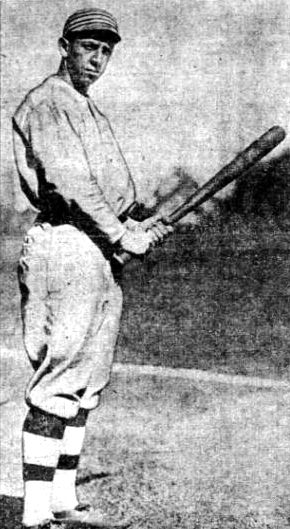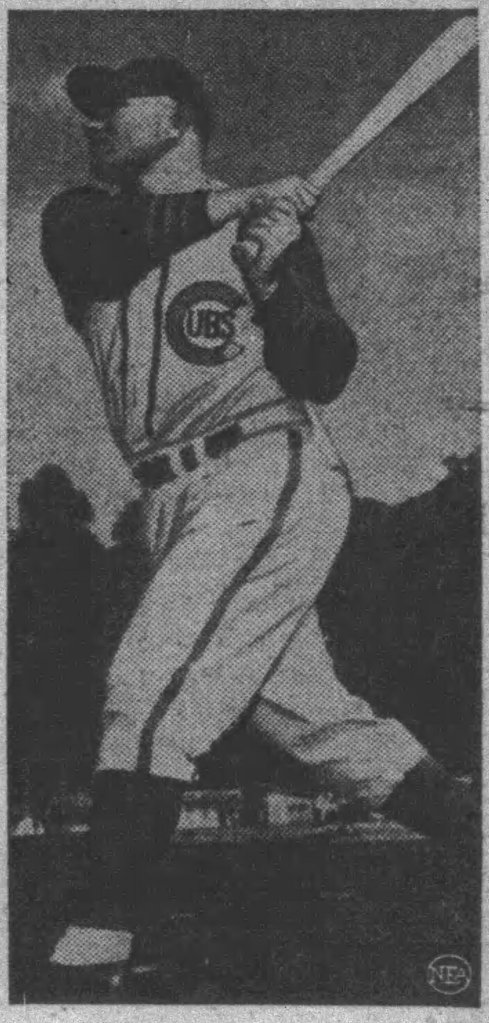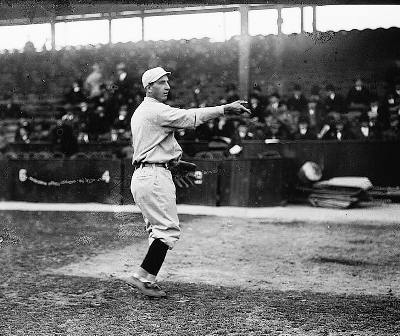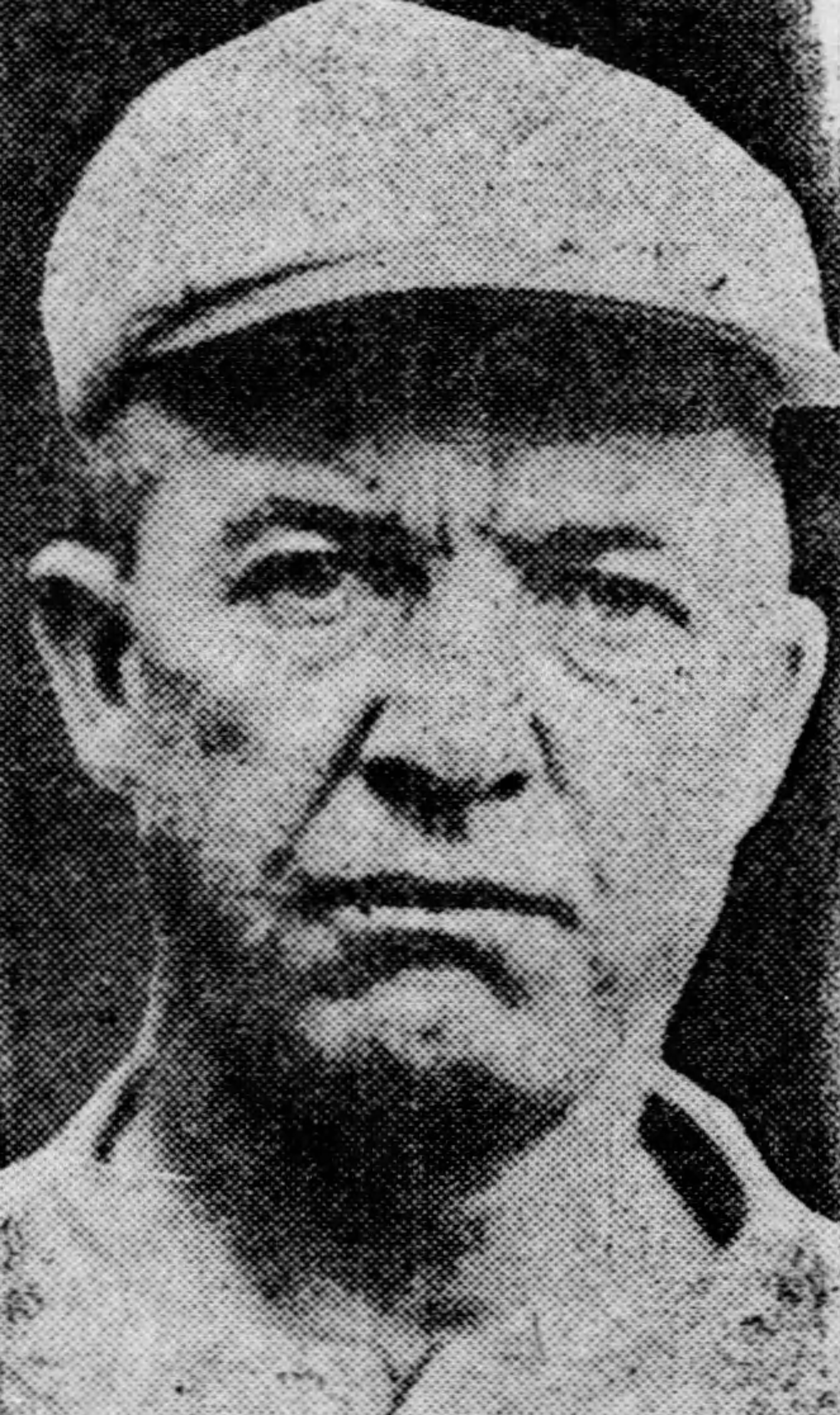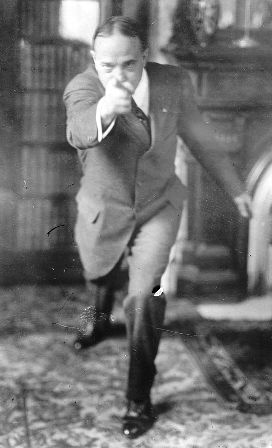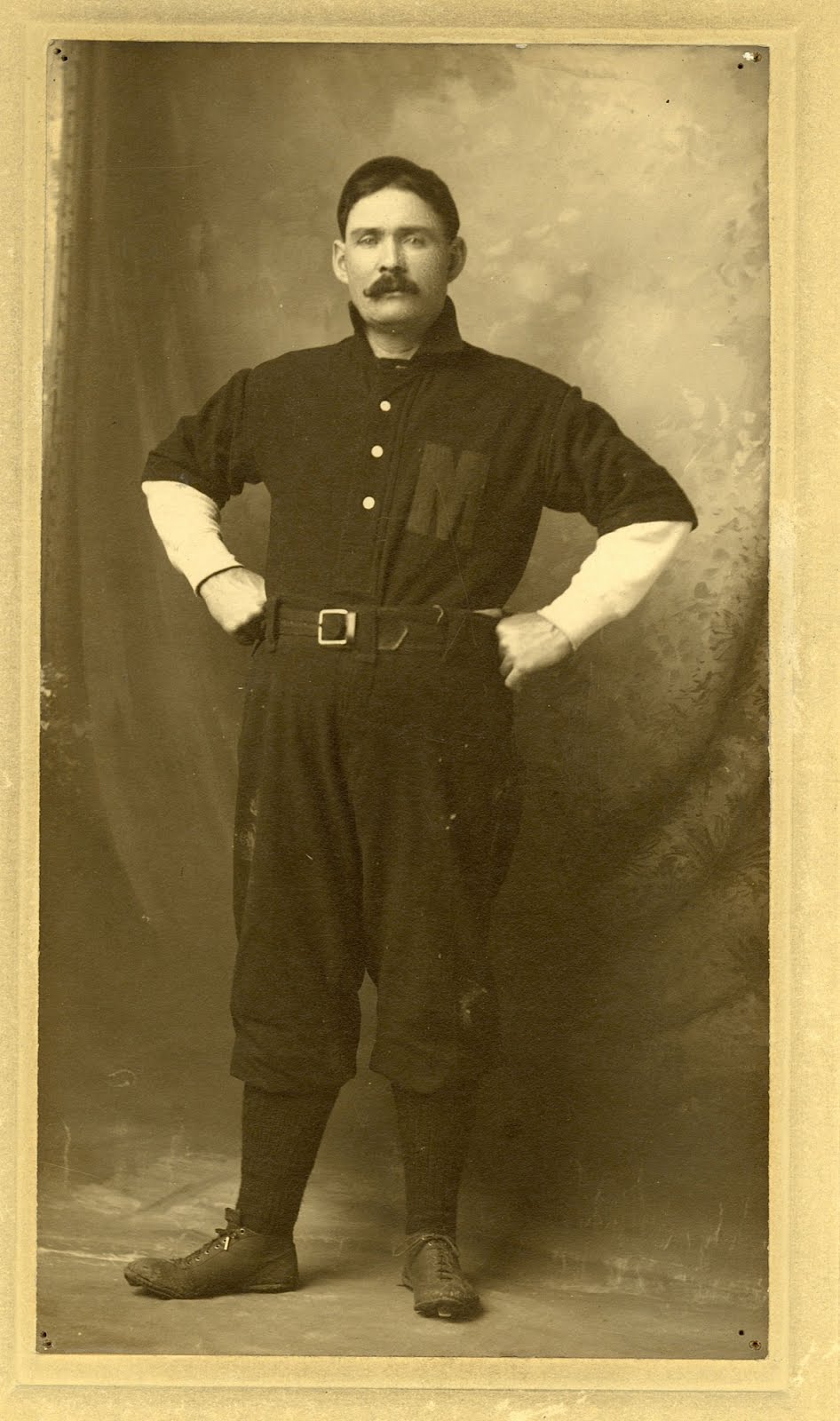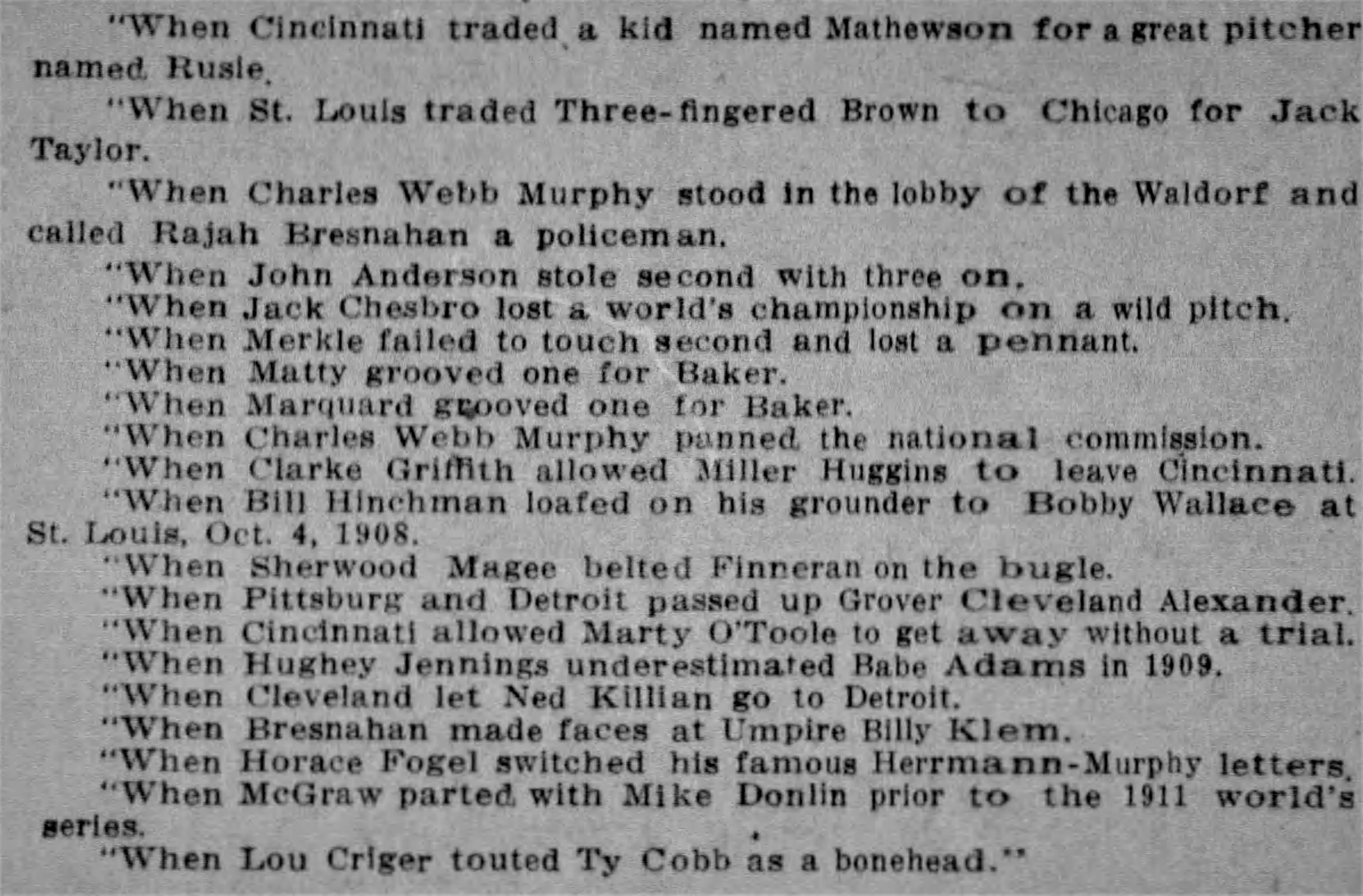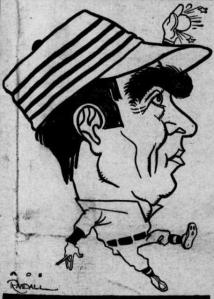Joseph John “Oyster Joe” Martina made a name for himself in New Orleans before he threw his first professional pitch. Martina’s father Anthony was at one time the city’s largest oyster dealer, a business he passed on to his sons.
Martina was playing semi-pro ball for the Sam Bonarts—a team sponsored by the owner of a local clothing store, and for a club called the Beavers when he decided in addition to pitching, he had a talent for distance throwing.
He won $25 in a contest at Pelican Park in July of 1909, The New Orleans Times-Democrat said Martina “threw the sphere from home plate over the back fence.”

Martina, circa 1909
The throw was said to be 394 feet; just 11 feet short of what was considered the world record—there was some dispute in contemporaneous accounts about who actually held the record, some credited it to Larry Twitchell, said to have accomplished the feat in 1888 and others to Same Crane, whose was made in 1884.
Martina made his next attempt on July 31.
The New Orleans Picayune said:
“Joe Martina met with success this afternoon in his effort to break the world’s record for throwing a baseball, his best throw being 416 feet and 2 inches.”
The paper said he “threw a standard league baseball, which was inspected by several representatives of the southern division of the American Amateur Athletic Union (AAU).”
The event was of interest to local gamblers and when Martina made the record-setting throw it created a stir:
“Disputes also arose over Martina being allowed five throws. Those placing wagers against his breaking the record claimed that only three throws should be allowed. It was on the fifth throw that Martina made the record.”
There was also initially some doubt that the record would be accepted by the AAU because of the five throws. The Times-Democrat said:
“Usually only three throws are allowed. But as there are no definite rules governing contests of that kind, Martina’s record will likely stand. Whether it was his fifth of fiftieth it was a great heave and one which should go as a record.”
The Picayune said there might be another problem with the record:
“One regret remains, that the throw was not measured with a steel tape. It was measured with a linen tape, and may not be accepted by the AAU officials, although the throw was so much over the record the is no question of it being farther than Crane’s”
The record, and Marina’s performance in New Orleans’ semi-pro league earned him a tryout the following spring with the Atlanta Crackers in the Southern Association—pitching three innings in the first game of Atlanta’s exhibition series with the Philadelphia Athletics. Marina gave up one run and struck out three.
The Atlanta Georgian and News said:
“Martina is nothing if not confident.
“After his try-out against Philadelphia he said: ‘Why, it’s just as easy to pitch against those big leaguers as it is against the New Orleans semi-pros. I don’t see anything very hard. I think I can make good in the Southern league all right I certainly had the steam against the Athletics. How many his did they make, anyhow’”
The Crackers did not agree, and sold the 20-year-old to the Savannah Indians in the Sally League
Martina bounced from Georgia, to Louisiana, to Mississippi and then Texas over the next four years.
In the spring of 1914, entering his third season with the Beaumont Oilers in the Texas League, Martina faced the New York Giants. The Giants beat him 5 to 2, but The New York Sun said:
“The Giants had practice hitting speed the other day. Joe Martina, who prescribed the medicine for the National League champions, had it in caloric quantities…I yearned for a chance in the majors, felt I had more stuff than many pitchers sent up from the South but the big opportunity always passed me by.”
Red Murray of the Giants, barely avoided getting hit in the head with a Martina fastball, and told the paper:
“’That fellow’s got as much speed as I ever saw.’ Said John after the game, and the other Giants corroborated him. He’s as fast as (Chief) Bender.”
The Sun took notice of more than the pitcher’s speed:
“This Martina is something of a character. In the course of the game the umpire announced that Mathewson would pitch today. ‘Mathewson?’ queried Martina, who appears to be n iconoclast. ‘What busher’s that?’
“’Say,’ exclaimed the skeptical Martina to Chief Meyers when the latter made a base hit after several fruitless tries in that direction, ‘you’re lucky to get a hit off of me,’ and then, by the way of an afterthought: ‘All the hits you ever get are lucky.’
“Evidently, Mr. Martina is no hero worshiper.”
When he struck out Fred Snodgrass, he asked, “How do you like that, busher?”
Throughout his 20s, Martina was considered an “iron man,” pitching from 261 to 330 innings every year from 1910 through 1915; he also, according to The Picayune regularly pitched Sunday games in New Orleans throughout each off season.
In 1916, he injured his arm—or as The Arkansas Democrat said, his “arm cracked after hard usage.”
Speed Johnson of The Chicago Record Herald compared Martina to White Sox ace Ed Walsh, “The spitball king of other days now is a bench-warmer.”
Johnson said Chattanooga Lookouts manager Kid Elberfeld was the culprit:
“Performing under orders from (Elberfeld) Martina pitched seven games in the first sixteen games of the season. From May 1 to May 13 he officiated in five engagements, toiling with a sore arm.”
Elberfeld claimed that Martina injured his arm throwing too many spitballs, Johnson said, “it behooves young pitchers bent on winning fame as iron men to work only in their turn.”
Despite the reported injury, and a release from Chattanooga, Martina pitched 278 innings in 1916 with three teams.
Martina went back to the Texas League for four more seasons—including a 28-win season for Beaumont in 1919.
In 1921 he came back to the Southern Association, with his hometown Pelicans. From 1921-1923 he won 56 games, including a 22-6 mark in 1922. He told The Times-Picayune:
“It’s the old story, “You don’t learn how to pitch until your arm is gone.”
His three-year run with the Pelicans finally earned him a major league contract in 1924. Umpire Billy Evans said in his nationally syndicated column:
“Speaking of miracle workers, supermen, and rookie phenoms of baseball, don’t overlook pitcher Joe Martina of the Washington Nationals.
“At the age of 34, when most big leaguers are wondering how much longer they will be able to stand the pace, Joe Martina is making his debut.”
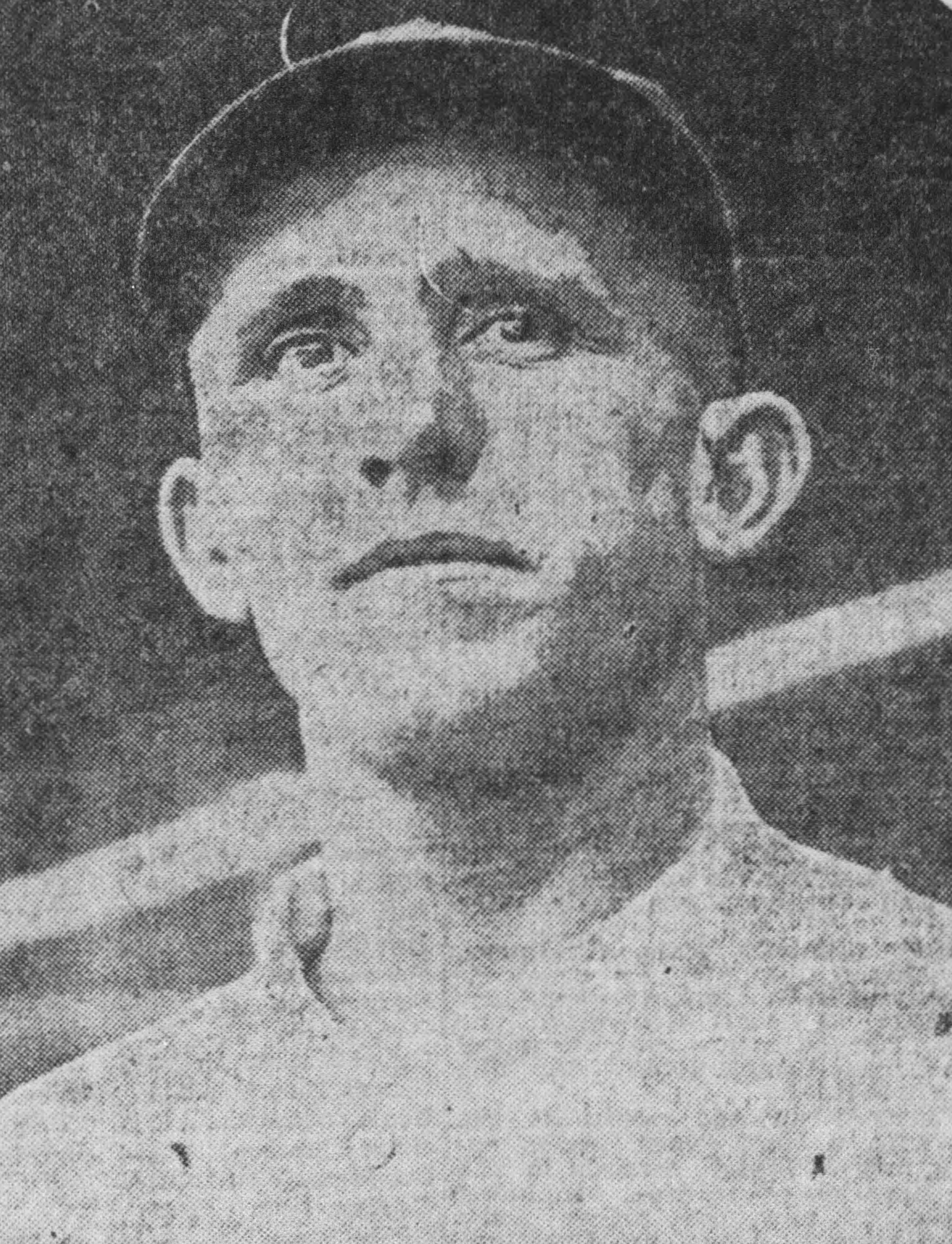
Martina, 1924
Martina told Evans:
“I had as much stuff fifteen years ago as I have today, and with-it youth, but somehow the major leagues scouts would annually pass me up.”
He was 6-8 for the World Series Champion Senators, he pitched one perfect inning in game three of the World Series. In the off season, Washington Manager Bucky Harris told The Washington Post that Martina “will win at least 15 games this year and may reach the 20 mark.”
He was due to join the Senators in Tampa, Florida on February 19, 1925, but failed to show up. The Post said Martina wired President Clark Griffith and asked to report later because he was having a new home built. Griffith refused and he was “notified by telegraph” that he was suspended. The Washington Evening Star said he would be fined and forced “to labor at a smaller salary,” for the season. The paper suggested that the pay cut would not impact him greatly because:
“The Mardi Gras festivities in New Orleans, with the resulting big crowds in attendance and the consequent increase in the oyster business conducted by Martina probably mean that the pitcher can suffer these financial setbacks and still be ahead of the game.”
He arrived in Tampa on March 1; The Star said Griffith withdrew the fine because Martina claimed he had received a letter from the Washington owner that he could report late:
“Griff admitted that in the stress of arranging for the annual pilgrimage South of his club he might have forgotten the original letter to Joe.”
On April 9, Martina, along with left-handers–Jim Brillheart and Jim McNamara—were released by Griffith. The Star said
“(Martini’s) work this spring indicated he has passed the peak of his form which is not quite good enough for fast company.”
He returned to New Orleans for four more seasons—winning 77 games and leading the Pelicans to Southern Association championships in 1926 and 1927. The 39-year-old went back to the Texas League for one more season in 1929; after a disappointing 10-13 campaign for the Dallas Steers, Martina purchased—or bartered for—his release. The Times-Picayune said:
“Martina has been given his unconditional release at the price of two barrels of oysters. This was the price demanded by Fred McJunkin, president of the Dallas club.”
He played two more seasons in the Cotton States League and took a crack at managing with the Baton Rouge Standards in 1931—he was released mid-season at age 41.
With both the Pelicans and the Knoxville Smokies hopelessly out of the 1931 Southern Association pennant race, Knoxville signed Martina to pitch against New Orleans on the final day of the season. He started the first game of a double header, gave up six runs over eight innings and lost his final game as a professional.
Zipp Newman, sports editor of The Birmingham News and official scorer for the Birmingham Barons for 44 years said Martina’s strong arm was with him to the very end::
“After pitching a full game for Knoxville against New Orleans Sunday, Joe went to the outfield and made the longest throw-in. Joe threw the ball right up to the grandstand. There wasn’t a youngster on the field who could come close to him. Joe Martina arms are few and far between in baseball.”
Martina, who died of a heart attack in 1962, said in an interview with Newman in 1941:
“I am convinced I had more human endurance than any man who ever lived. In all my life I was never tired, even when it was 110 out there on the mound. The answer is simple: I was a good boy. I behaved myself and every at 8 o’clock I was in bed…When my arm was live the ball would sail slightly upward, and nobody could hit me. When it was dead, although the pitch was just as fast, the ball went straight, like on a string, and I was a goner.”
Tags: Atlanta Crackers, Beaumont Oilers, Billy Evans, Birmingham Barons, Bucky Harris, Chattanooga Lookouts, Chief Bender, Christy Mathewson, Clark Griffith, Cotton States League, Dallas Steers, Fred McJunkin, Fred Snodgrass, Jim Brillheart, Jim McNamara, Joe Martina, Kid Elberfeld, Knoxville Smokies, Larry Twitchell, New Orleans Pelicans, New York Giants, Philadelphia Athletics, Red Murray, Sam Crane, Savannah Indians, South Atlantic League, Southern Association, Speed Johnson, Washington Nationals, Zipp Newman

